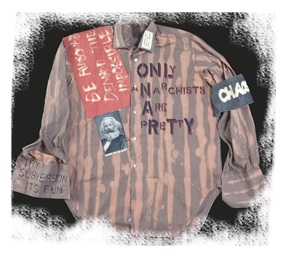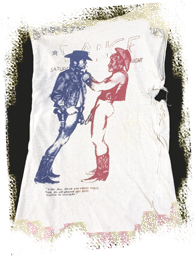SEX PISTOLS
La première partie de l’exposition est toute entière consacrée aux Sex Pistols, sans doute le groupe le plus emblématique du punk. The first part of the exposition is all about the Sex Pistols, most likely the most illustrative punk group.
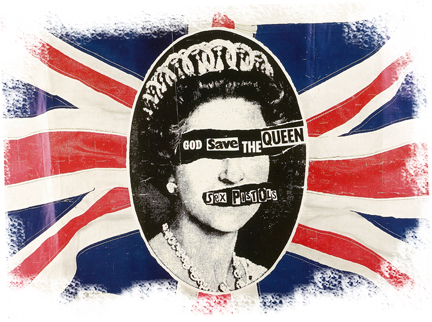

Les Sex Pistols sont nés de la rencontre, orchestrée par Malcolm McLaren, du chanteur John Lydon (alias Johnny Rotten, « Le Pourri ») et des musiciens du groupe The Strand : Steve Jones (guitare), Paul Cook (batterie) et Glen Matlock (basse, remplacé en 1977 par John Simon Ritchie, alias Sid Vicious). Lorsqu’ils commencent à se produire sur les scènes de Londres, en 1975-1976, il apparaît aussitôt que leur impact n’est pas seulement musical, mais aussi visuel. Les images qu’ils arborent ou qui les entourent sont essentiellement l’œuvre des créateurs de vêtements Vivienne Westwood et Malcolm McLaren, ainsi que de Jamie Reid, auteur du célèbre visage de la reine d’Angleterre barré par le titre de la chanson « God Save the Queen ». The Sex Pistols were formed out of the meeting – orchestrated by Malcolm McLaren – of the singer John Lydon (aka Johnny Rotten) and the musicians of the band The Strand: Steve Jones (guitar), Paul Cook (drums) and Glen Matlock (bass, replaced in 1977 by John Simon Ritchie, aka Sid Vicious). When they appeared on the London scene, in 1975-76, it immediately became clear that their impact would be not just musical but also visual. The images they wore or surrounded themselves with were essentially the work of the designers Vivienne Westwood and Malcolm McLaren, as well as Jamie Reid, who created the iconic portrait of the Queen with eyes and mouth masked by the anthem “God Save the Queen”.
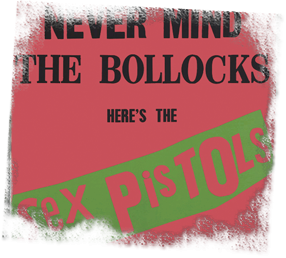
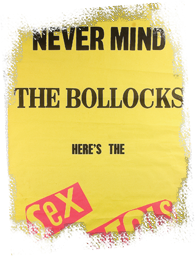
Les apparitions télévisuelles des Sex Pistols, à partir d’août 1976, diffusent pour la première fois auprès d’un large public ce spectacle de la violence par lequel s’est constituée une grande partie des codes esthétiques propres au mouvement punk. Cette iconographie provocatrice, mise en forme avec une inventivité remarquable, frappe les yeux et les esprits au-delà de la brève existence du groupe, qui explose dès janvier 1978 au terme d’une chaotique tournée aux États-Unis. The television appearances of the Sex Pistols, from August 1976, were the first to broadcast to a large audience the spectacle of violence, which moulded a good portion of the aesthetic codes of the punk movement. This provocative iconography, packaged with remarkable inventiveness, struck people’s imagination in a way that went beyond the brief existence of the group, which broke up in January 1978 following a chaotic tour of the United States.

